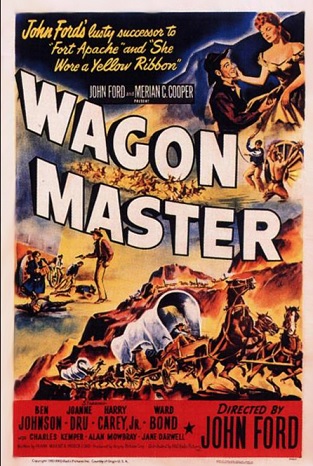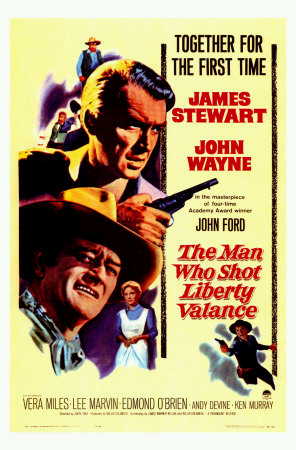 Woody Strode was a Hollywood legend. A former college football player, Strode transitioned into films, starting off in bit and supporting roles before building to scene-stealing roles and appearances, one of the first African-American actors to do so in Hollywood history. He truly broke through in 1960 with a trio of roles, The Last Voyage, Spartacus (the most iconic of the 3) and Sergeant Rutledge, an interesting — if flawed — western that was ahead of its time.
Woody Strode was a Hollywood legend. A former college football player, Strode transitioned into films, starting off in bit and supporting roles before building to scene-stealing roles and appearances, one of the first African-American actors to do so in Hollywood history. He truly broke through in 1960 with a trio of roles, The Last Voyage, Spartacus (the most iconic of the 3) and Sergeant Rutledge, an interesting — if flawed — western that was ahead of its time.
It’s 1881 in the American Southwest and a trial is set to begin at a cavalry outpost. On trial is Sergeant Braxton Rutledge (Strode) from the 9th Cavalry — a regiment of Buffalo Soldiers — who is well-respected by the officers and the troopers for his unquestioned ability and leadership as a soldier. The charge against him? The rape and murder of a young white woman and the murder of her father, the outpost’s commander. Rutledge’s defense is Lt. Tom Cantrell (Jeffrey Hunter), the sergeant’s previous commander. The evidence is damning against Rutledge with no hope of an acquittal, both because of the evidence but also the horror of what he’s believed to have done, a black soldier raping a white girl. Will the truth come out?
Before a Congressional hearing, director John Ford famously said “I’m John Ford. I make westerns.” In a long, distinguished career, Ford is especially associated with the western genre, from his cavalry trilogy to The Searchers to The Man Who Shot Liberty Valance. ‘Rutledge’ is interesting because of the subject matter and of its ahead of its time portrayal of the west. For one, the Buffalo Soldiers are a focus, the film playing almost like a tribute to the bravery of the black cavalry troopers. For two, the counter, the depiction of racism in a dark, uncomfortable story about rape and murder. As the trial develops, it’s just that, it’s incredibly uncomfortable. Where he started with The Searchers in a more realistic west, Ford continues here and returns again in Cheyenne Autumn.
Ford’s westerns typically stuck to pretty traditional storytelling devices. Later in his career, he branched out with ‘Rutledge’ a prime example. It’s a courtroom drama told with a flashback developing within witnesses’ testimonies. The storytelling technique works out nicely, the drama unfolding almost like a stage play. Ford is synonymous with the outdoors, huge vistas and natural landscapes, so it’s pretty cool to see him thrive filming indoors on a set (more on locations later). Unique lighting, cool camera work, it’s a change of pace, but it works.
Strode’s Sgt. Braxton Rutledge is a character that steals the show. At times, Strode can be a little wooden, but he definitely gets his chances to show off his acting chops! His testimony is a highly memorable scene, a very human moment. You get little touches of his history too — Hunter’s Cantrell finding a piece of paper Rutledge carries with him that gave the former slave his freedom — as well as the sergeant’s fellow soldiers and the respect we see they have for him. Strode delivers his best performance in a distinguished, history-making career. Juano Hernandez is excellent too as Sgt. Skidmore, another Buffalo Soldier and a former slave.
Having worked with Ford five years earlier in the classic The Searchers, Hunter actually gets more screentime as Lt. Cantrell. He’s a solid lead to keep the story moving, a character who takes part in both the courtroom and the flashbacks as an Apache war party goes on a murderous rampage. Hunter was an underrated actor, and he was always likable on-screen. His budding romance with Constance Towers (a key character Rutledge saves from Apaches) never really develops, taking away the more interesting focus of Rutledge, the trial and the cavalry patrol. Ford regulars Jack Pennick, Chuck Roberson and several others play supporting/background parts.
Other than the romance that goes nowhere, my biggest issue is the usual light-hearted Ford touches he always insisted on in his movies. Case in point, the wives of the officers, the old white ladies ‘ooohhhhing’ and ‘aaahhhing’ at the more scandalous moments of the trial as they fan themselves. It’s a story about a rape and murder, and these comedic touches are HORRIFICALLY out of place. Willis Bouchey plays the president of the court martial, balancing the trial and the officers’ wives. Carleton Young delivers a harsh, overdone performance as Captain Shattuck, the prosecuting officer.
If the courtroom drama isn’t pulling you in, the flashbacks of the cavalry patrol should appease the more traditional western fans. The filming locations in Monument Valley and Mexican Hat in Utah are appropriately beautiful, an authentic backdrop to the wild west story. The movie overall is a unique gem though, both for its traditional elements and its more innovative, unique elements like the courtroom drama. Definitely give this one a watch.
Sergeant Rutledge (1960): ***/****

 The late 1940s and early 1950s were undoubtedly
The late 1940s and early 1950s were undoubtedly  By 1955,
By 1955,  Director
Director  The late 1940s and into the 1950s was an important stretch for
The late 1940s and into the 1950s was an important stretch for  Ask a western fan what
Ask a western fan what  I recently reviewed 1957’s Gunfight at the O.K. Corral, one of many versions Hollywood has done of Wyatt Earp, the Cowboys and Tombstone’s infamous history in the 1880s. Not drifting too far here today with another version of one of the west’s most iconic moments, 1946’s
I recently reviewed 1957’s Gunfight at the O.K. Corral, one of many versions Hollywood has done of Wyatt Earp, the Cowboys and Tombstone’s infamous history in the 1880s. Not drifting too far here today with another version of one of the west’s most iconic moments, 1946’s  Director
Director